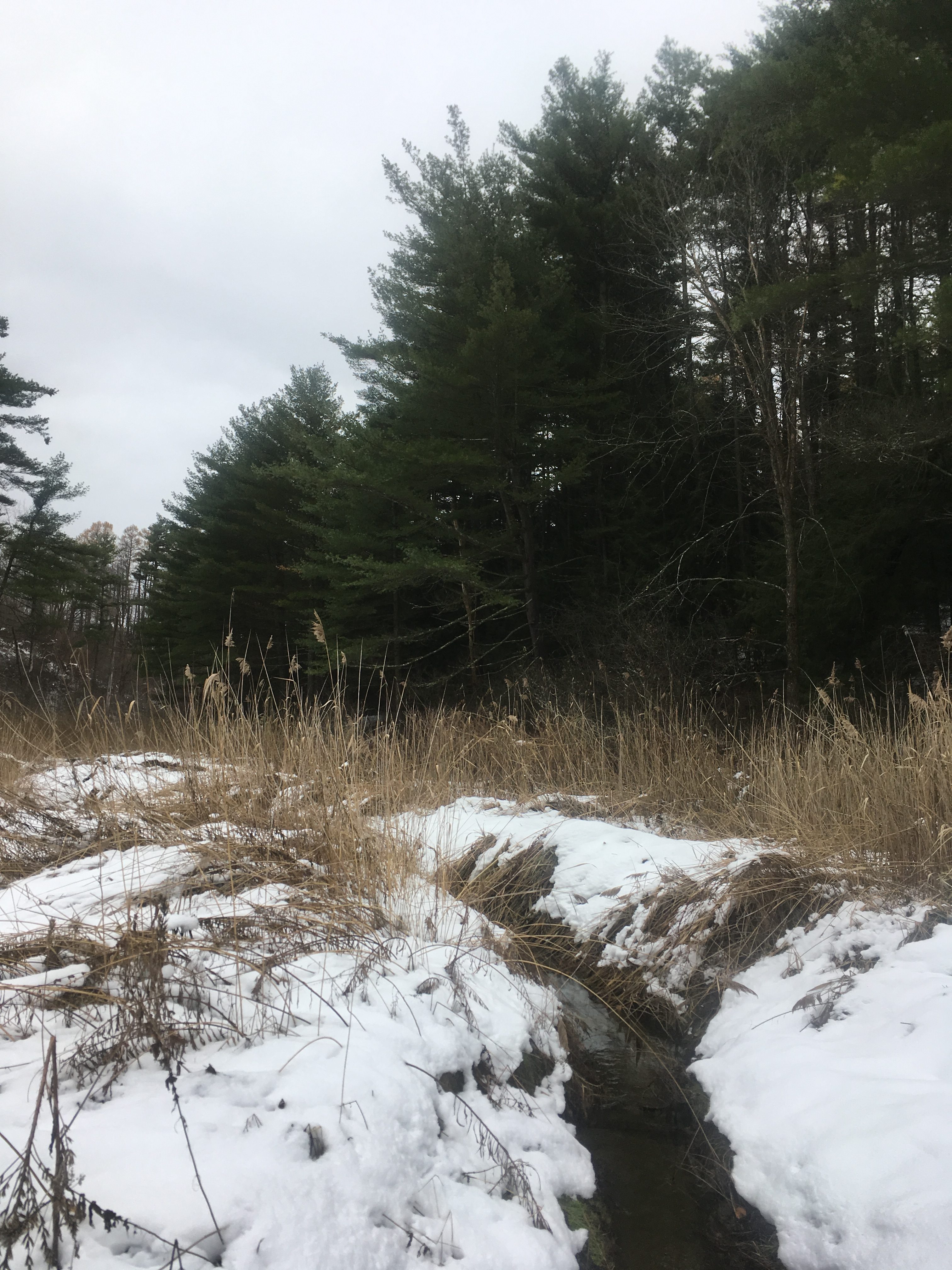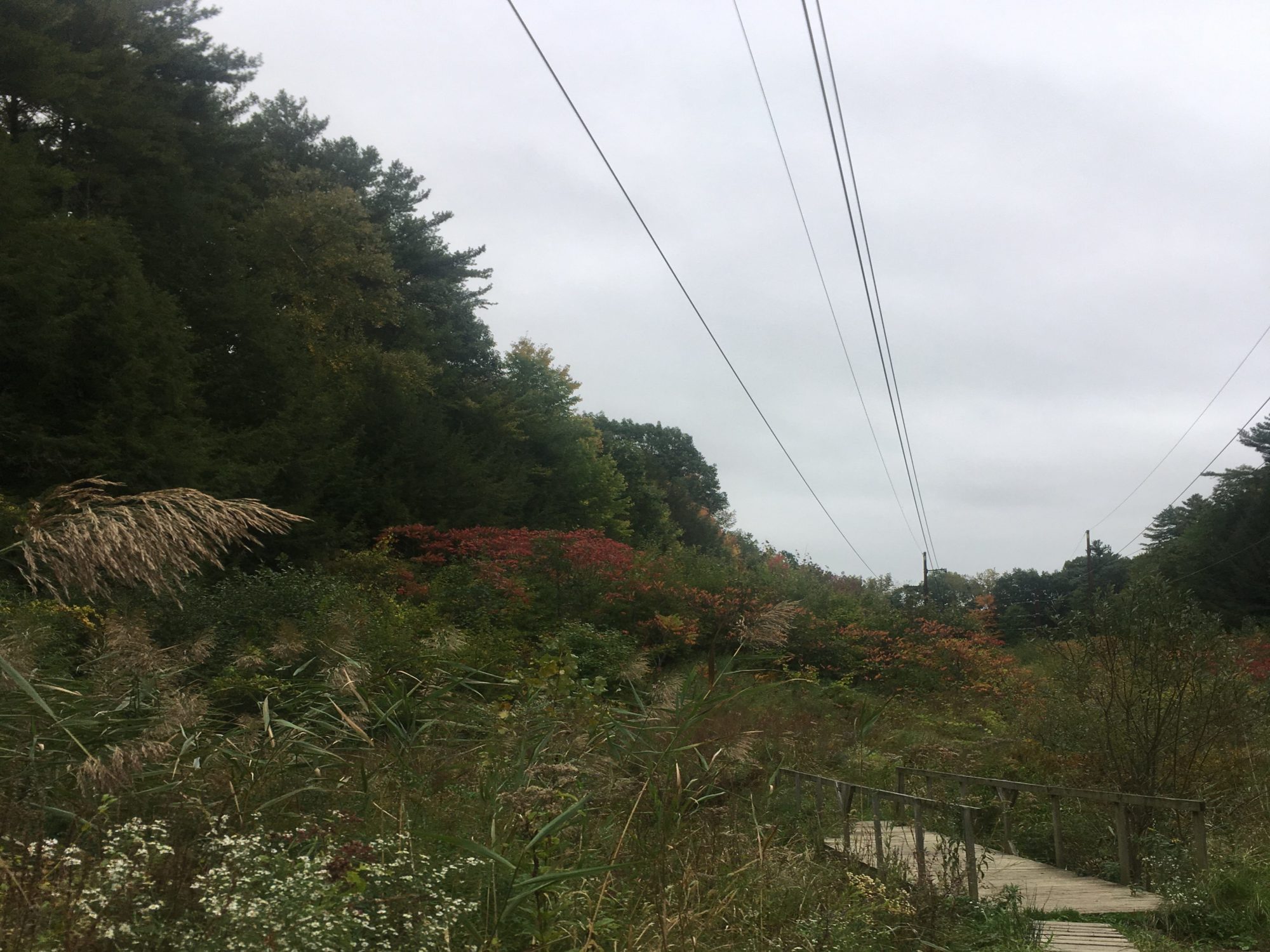
I visited Centennial Woods today to see it under snow for the first time. I was truly amazed at how different it looked. Most of the vegetation seemed to be gone, all buried under the heavy and icy snow. The water was the clearest I’ve ever seen it, and the entire forest was quiet and serene.
I was hoping to make some new discoveries about my site based off of animal tracks and other snowy evidence, however the snowfall was too old and had experienced too much foot traffic to pick out any interesting tracks. I did document one pop of color that stood out to me at the edge of my site (pictured below). I believe this is a very young eastern white pine (Pinus strobus) next to a fruiting invasive barberry plant (Berberis vulgaris or possibly Berberis thunbergii).

I also wanted to write a bit today about the human history on this land. I chose my site in particular because it is so heavily impacted by humans, which I think creates a very interesting and unique ecosystem.
Centennial Woods was purchased by the University of Vermont from various owners starting in the late 1800s. In 1968 they purchased the final piece of privately owned land and Centennial Woods as we now know it was formed. This means that the area hasn’t actually been protected for very long. Much of it was likely used for agricultural purposes in its past. This means that Centennial is an example of the story of much of Vermont land, one of native Abenaki use, moving to European settlement and agriculture with intense deforestation, and then eventual reforestation.
I find my little section particularly interesting because it still experiences much more human impact than the rest of the woods (which get their fare share from pedestrians as well). The area of my site is routinely cleared every few years so nothing will grow tall enough to impact the power lines. I’m including the photo below, which I took today, since you can see a row of logs along the side of the hill which leads down to the bridge. I’m not sure how old these logs are, but they’re a good visual of how much heavy impact this spot experiences.

-Luca
